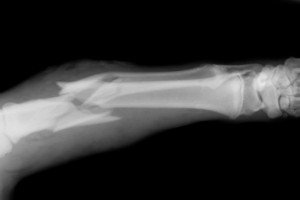Weightlifting Best For Fat Loss
One of the greatest exercise myths for fat loss is low intensity aerobic training will help an individual lose fat at a great rate than higher intensity weightlifting sessions. Many fitness enthusiasts are missing the boat when it comes to this greatly misunderstood concept.
Clients always want to know if they should avoid weight training programs altogether and pursue the alleged fat burning aerobic training. Many people firmly believe that lower intensity cardiovascular training will help them lose body fat at a greater rate than with just weightlifting exercises alone.
Let's take a closer look at which exercise regimen, weight training or aerobics, is the best system to lose body fat.
Aerobic or cardiovascular training is performed with high volume, and low intensity exercise training. Oxygen is required in the process; and the training session can last for more than twenty minutes, all while continuously exercising at a high heart rate.
The benefits resulting from aerobic or cardiovascular training is an increase in cardiovascular function, and a decrease in body fat from the extra calorie burned.
However, with positives, there can also be negatives. There are a few things lost when training aerobically. First off, over time, a decrease in strength from muscle breakdown can occurs. This decrease in strength results from a decrease in muscle mass, power, speed, and anaerobic capacity.
On the other hand, with weight training programs, there is a significant increase in muscle tissue, metabolism, strength, speed, power, and anaerobic capacity. There is also a slight increase in cardiovascular function.
Now why do so many fitness participants feel cardiovascular or aerobic exercise is far superior for body fat loss? I believe it is quite simple; they are listening to individuals who are not considering the true physiology of the situation. However, one thing they do understand is the preferred fuel utilized during low intensity aerobic exercise is from fat. Therefore, many feel if a larger percentage of fatty acids are consumed for fuel, a greater fat loss will result. But is this really correct?
As a matter of fact, fat is the primary preferred fuel utilized during sleep. Thus, wouldn't the best exercise to lose body fat be sleep alone? Not so fast!
In my opinion, exercising at a low intensity aerobically, with a goal for maximum fat loss, is the greatest myth for losing body fat.
Myths can be detrimental to fitness, and fat loss results. Make sure you have the complete scientific story before you accept a statement. Your results will depend upon it.
Here is a fat loss workout example that will help you understand which type of training is best to lose body fat. On Monday, you decide to walk on the treadmill for 30 minutes at a very comfortable 3.3 miles per hour pace. The results of your cardiovascular training session include a calorie burn of 300 calories, where a high 60% of the fuel is supplied from fatty acids. Now, on Tuesday, you decide to run on the treadmill for 15 minutes at a very high intensity level of 6 miles per hour with a 7% incline grade. Your heart rate was registered at 85% of your maximum heart rate, and you burned 350 calories in those 15 minutes with a greater percentage of sugar burned than fat. That leaves you with a greater caloric burn of 50 additional calories resulting from exercising at a higher intensity for only a 15 minute duration. This will, over an extended period of time, lead to greater overall fat, and weight loss compared to the 30 minute, lower intensity cardiovascular training session.
Now to lose body fat, it simply isn't true that lower intensity, longer duration exercise, which burns a greater percentage of fatty acids, is far superior in overall fat loss compared to higher intensity, higher calorie burning strength training, or cardiovascular training.
With that said, the most effective, and efficient way to lose body fat is through a higher intensity training program like weightlifting because of the higher calorie burn, and the elevated metabolism from the added active, fat burning muscle tissue. The added metabolically active muscle tissue burns calories at a rate of 24 hours per day. It is much more important to think about the amount of calories expended during an exercise session versus the percentage of fat or sugar used as preferred, primary fuel.
Now I'm sure you agree weightlifting can be a more effective fat loss exercise program, but the ultimate fat burning exercise regimen is to combine weight training with higher intensity cardiovascular workouts. The best way to implement this training session is by performing your strength training routine first immediately followed by your cardiovascular training regimen.
It is time to put the confusion to rest regarding cardiovascular versus weight training for maximum body fat loss. Fitness buffs simply are not considering the amount of calories that are burned in regards to the type of fuel used to perform an exercise. The activity that burns the most calories will, in turn, burn the most body fat in the whole scheme of things.
+++++ Attention: Ezine Editors / Website Owners +++++
Feel free to reprint this article in its entirety in your eZine, Blog, Autoresponder,
or on your website as long as the links, text, and resource box are not altered
in any way.
Jim O'Connor- Exercise Physiologist / The Fitness Promoter
Copyright (c) - Wellness WORD, LLC
9461 Charleville Blvd. #312
Beverly Hills, CA 90212
1-866-935-5967
- Prev:Beyonc?Shakes off the Weight
- Next:Healthy Tips
Related Articles
-
6 Things No One Tells You About Losing Weight
If you’re one of o
-
Life Is One Damn Diet After Another
A common expression is that were ?going on a diet.? The phrase suggest
-
Lose Weight By Walking
Aerobic (also called cardiovascular exercise) exercise is a type o
-
Shifting The Pounds – Ways of Tackle This unique Struggle
Trying to keep fit is hard as you might be lured to devour your best s
-
Hoodia Gordonii The First Trials
When Hoodia was discovered the very first animal trials to test it was
-
Breaking Weight Loss Plateau for Vegetarians
Hello everyone, Ive been trying to lose
- DON'T MISS
- Weight Loss Camp: Enticing Kids To Shape Up
- Tips On How To Get Taller
- Kirstie Alley: Organic Liaison is Not a Scientology Diet
- 7 Signs Your Gut Needs Healing + How to Do It: A Doctor Explains
- Books On How To Lose Weight
- To Lose Weight Or Not To Lose Weight A Guideline For Men
- Global Warming Skeptics: Why Do They Exist?
- New Belly Fat Weight Loss Exercise Takes Less Time and Works Better, Say Researchers
- Do Lemons Really Help To Achieve Rapid Weight Loss?
- MCF Implies Losing Fats Forever




